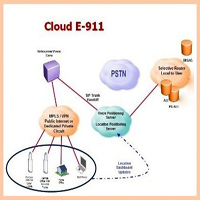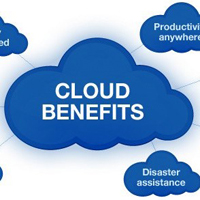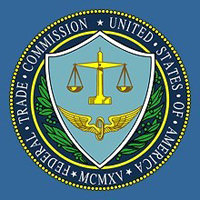In This Issue
- 911 Moves to Cloud
- Lawsuits Challenge
- Verizon APAC Cloud
- Report from the CEO
- SMEs Cloud Mystery
- IT Spend & Cloud Rise
- Beyond the Obvious
- Cloud and Mobile OK
- Senate IoT Resolution
- Industry to Congress
- FTC New IoT Office
- State Social Media Bill
- AI and Cloud Services
- The Data Explosion
- New Quantum Dots
- For Long Term Gains
- Coming DCIA Events
911 Moves to the Cloud
Excerpted from NoJitter Report by Andrew Prokop
 If I’ve learned one thing from this industry, it’s that everything changes. What you thought was the best way to do something will one day be seen as outdated and wrong. Don’t keep up with changing technologies and you will be obsolete quicker than you can say software-defined network (SDN).
If I’ve learned one thing from this industry, it’s that everything changes. What you thought was the best way to do something will one day be seen as outdated and wrong. Don’t keep up with changing technologies and you will be obsolete quicker than you can say software-defined network (SDN).
Worse than becoming a dinosaur, not keeping up with these fast moving changes might make you dangerous. And no, not in a cool way. Case in point is how you design, configure, and manage your enterprise 911 system.
Following best practices from the early 2000s could put lives at risk and make your company legally liable for wrongful injuries or worse, deaths.
Before I go any further, I feel the need to define a few terms pertinent to understanding Enhanced 911 (E-911). While this is only a subset of what you might encounter while planning for E-911, these definitions should be enough to make you dangerous (in the cool way this time):
A Public Safety Answering Point (PSAP) is a call center responsible for answering 911 calls. As of today, the United States has approximately 6,600 primary and secondary PSAPs in 3,135 counties, parishes, independent cities, and census areas… Read More
Lawsuits Challenge Net Neutrality Rules
Excerpted from Washington Post Report by Brian Fung
 An industry trade group and a small, Texas-based Internet provider are among the first to mount a legal challenge to the federal government’s new Net Neutrality rules. On Monday, USTelecom – a group that includes some of the nation’s largest Internet providers – filed suit in Washington, DC while Alamo Broadband sued the Federal Communications Commission (FCC) in New Orleans, LA.
An industry trade group and a small, Texas-based Internet provider are among the first to mount a legal challenge to the federal government’s new Net Neutrality rules. On Monday, USTelecom – a group that includes some of the nation’s largest Internet providers – filed suit in Washington, DC while Alamo Broadband sued the Federal Communications Commission (FCC) in New Orleans, LA.
The court filings kick-start a legal effort to overturn the FCC’s regulations, passed in February, that aim to keep Internet providers from speeding up, slowing down, or blocking web traffic.
“We do not believe the Federal Communications Commission’s move to utility-style regulation invoking Title II authority is legally sustainable,” USTelecom President Walter McCormick said in a statement. “Therefore, we are filing a petition to protect our procedural rights in challenging the recently adopted open Internet order.”
In its petition, Alamo alleges that the FCC’s Net Neutrality rules apply onerous requirements on it under Title II of the Communications Act, the same law that the FCC uses to monitor legacy phone service.
“Alamo is thus aggrieved by the order and possesses standing to challenge it,” the company’s lawyers wrote in the petition… Read More
Verizon Expands Cloud Services in APAC
Excerpted from RCRWireless News Report by Jeff Hawn
 Verizon is expanding its cloud service offerings in Hong Kong, Singapore, and Melbourne, three of the largest cities in Asia and hubs of international commerce and finance.
Verizon is expanding its cloud service offerings in Hong Kong, Singapore, and Melbourne, three of the largest cities in Asia and hubs of international commerce and finance.
Company officials said the new cloud services will facilitate enterprise growth through improvements in memory, storage, and network uptime, along with better network flexibility and control.
Essentially, customers will be able to request specific amounts of processing power, storage space, and memory. Verizon is also offering its Secure Cloud Interconnect, which allows customers to access other cloud providers including Microsoft, Salesforce, Amazon, Google, and Hewlett-Packard.
Francis Yip, Regional VP for Verizon Asia-Pacific emphasized the centrality of cloud-based computing to businesses. “It’s not if enterprises are moving to the cloud, but when and how. Cloud has become the default delivery platform for almost all of our customers fueled by the growth of data and the Internet of Things (IoT).”
Verizon’s own internal analysis, which it released as part of its “State of the Market: Enterprise Cloud 2014 Report,” showed that 65% of enterprises are already using cloud computing, and that number is expected to increase to 71% by 2017… Read More
Report from DCIA CEO Marty Lafferty
 As cloud computing continues to expand globally, demand is increasing for new regional datacenters at the same time as cloud solutions are providing enormous new growth opportunities to enterprises of all shapes and sizes.
As cloud computing continues to expand globally, demand is increasing for new regional datacenters at the same time as cloud solutions are providing enormous new growth opportunities to enterprises of all shapes and sizes.
DataCloud South East Asia, the upcoming conference co-sponsored by BroadGroup and the DCIA, taking place on April 8th and 9th in Johor, Malaysia, is especially timely and valuable for all interested parties.
As investment agencies worldwide promote the benefits of their locations for building datacenters, a new player – Iskandar – is emerging in this increasingly competitive arena.
Our conference will be held at the Traders Hotel in the Iskandar section of Johor, and will be enhanced by international experts including Amazon Web Services’ Markku Lepisto, Brunei International Gateway’s (BIG) John Murray, Dell’s Chang Tsann, Hewlett Packard’s Christophe Maisonnave, Huawei’s Zou Xiatong, Merrill Lynch’s Gautam Saxena, NEC’s Shinya Kukita, Pacnet’s Giles Proctor, and Telekom Malaysia’s Fermin Fautsch, among many others.
At our event, Datuk Ismail bin Ibrahim, CEO of the Iskandar Regional Development Authority (IRDA) will make his organization’s claim as the next big datacenter opportunity for this expanding sector in Southeast Asia.
The conference will be officiated by Dato’ Sri Ahmad Shabery Cheek, Minister of Communication and Multimedia, Malaysia.
In addition, Dato’ Sri Idris Jala, also a Minister, in the Prime Minister’s Department, and CEO of the Performance Management Delivery Unit (PEMANDU), will speak on the nation’s Economic Transformation Program (ETP) and how datacenters contribute to the economy.
Johor’s geographic position, at the tip of Malaysia, directly across from the Singapore Straits, provides easy access from the island state and offers a great deal of space for development.
Our event will cover cloud computing, data governance across the region, finance and investment, new technological innovation – such as modular datacenters, and a panel focusing on enterprise criteria in selecting sites for datacenter locations.
We will also host a special Finance and Investment Symposium.
Designed for regional and international enterprises, who are invited to attend the conference on a complimentary basis, we will also host a tour of Johor and the proposed datacenter sites, and arrange for delegates to meet with government agency officials during their stay.
Please email enquiries@broad-group.com to register now. Share wisely, and take care.
Cloud Computing Still Mystery to Asia SMEs
 Across the Asia Pacific region, small and mid-size enterprises (SMEs) spent $2 billion on cloud computing services last year, an impressive growth rate of 42 percent. Despite the rapid expansion of cloud technology, there is still a lot of room to grow.
Across the Asia Pacific region, small and mid-size enterprises (SMEs) spent $2 billion on cloud computing services last year, an impressive growth rate of 42 percent. Despite the rapid expansion of cloud technology, there is still a lot of room to grow.
SMEs make up the vast majority of business across Asia, representing more than 90 percent of all businesses. The Asian Cloud Computing Association (ACCA) reviewed 14 developed and emerging nations in the Asia Pacific region and found that, together, these nations contribute $10.9 trillion to their national economies and generate 49 percent of the region’s total GDP.
Two billion, it seems, is a drop in the bucket for the region’s revenue-generating power.
The study, titled SMEs in Asia Pacific: The Market for Cloud Computing 2015, finds cloud-based technologies a particularly good fit for Asia’s SMEs in both emerging and developed markets.
The cloud gives business owners access to the latest information technology (IT) tools and technologies, without the individual burden of building the needed infrastructure. With little IT expertise, SMEs reap the benefits of enterprise-level software and IT solutions. The cloud is immediately accessible and affordable, thanks to its nature as a subscription-based service… Read More
IT Spend and Cloud Computing Rising in 2015
Excerpted from MSPmentor Report by Michael Brown
 This year, it looks like information technology (IT) spending is going up, and cloud-based file sharing is a big contributor. A survey of IT executives shows 43 percent of companies plan to increase their IT budget in 2015, with the average increase at 13 percent
This year, it looks like information technology (IT) spending is going up, and cloud-based file sharing is a big contributor. A survey of IT executives shows 43 percent of companies plan to increase their IT budget in 2015, with the average increase at 13 percent
Here is what they plan to spend their IT budgets on this year.
Cloud-based sharing and storage has seen a major increase in the past few years, but 2015 looks to be its biggest year yet. 40% of those surveyed planned to increase their spending on cloud computing and software-as-a-service (SaaS).
Companies can now really see the value in increasing their flexibility and accessibility by leveraging the cloud. Organizations that adopted the cloud in the past are investing even more to increase functionality and move more of their operations away from physical servers and processes.
As a managed service provider (MSP), you have multiple opportunities to take advantage of this beginning-of-the-year surge in cloud spending. For your existing clients you should be highlighting new services you can offer and discussing new ways you can leverage the cloud. For new clients, be prepared to answer cloud questions and offer a complete solution… Read More
Benefits that Cloud Computing Provides Beyond the Obvious
Excerpted from Business Today Report by Niraj Kaushik
 Cloud technology has established itself as the irresistible force that will impact information technology (IT) strategies of every single business. From the vantage point of a CFO or a CEO, the implications of this irreversible shift to cloud is not just limited to how an organization stands to gains from IT.
Cloud technology has established itself as the irresistible force that will impact information technology (IT) strategies of every single business. From the vantage point of a CFO or a CEO, the implications of this irreversible shift to cloud is not just limited to how an organization stands to gains from IT.
According to industry reports, cloud will see the bulk of new IT spends by 2016, high enough to warrant closer financial scrutiny.
In fact, cloud services revenue is projected to have a five-year projected compound annual growth rate (CAGR) of 33.2 per cent from 2012 through 2017 across all segments of the cloud computing market.
Beyond the obvious financial benefits of cloud’s subscription model, the technology’s economics are relevant for other functions within an organization as well. Historically, the departments of marketing, HR, manufacturing, and procurement have often proposed new technology projects that promise new operational efficiencies or increased access to potential customers or employees.
These projects and their proposed benefits may sound attractive but they often falter at the financial clearance stage… Read More
Cloud & Mobile Integrations Accepted by CIOs
Excerpted from Midsize Insider Report by Shawn Drew
 Cloud and mobile integrations are increasingly occurring within businesses, but some challenges still remain. Midsize businesses can benefit from being acutely aware of how powerful these tech paradigms can be and learn where others are falling short to carve out an advantage in a crowded marketplace.
Cloud and mobile integrations are increasingly occurring within businesses, but some challenges still remain. Midsize businesses can benefit from being acutely aware of how powerful these tech paradigms can be and learn where others are falling short to carve out an advantage in a crowded marketplace.
Gartner’s Flipping to Digital Leadership: The 2015 CIO Agenda study polled 2,800 CIOs from around the world regarding their current technology practices and future plans. Only nine percent of those polled reported not even considering a cloud-based software-as-a-service (SaaS) solution, and that number only rises to 15 percent for infrastructure-as-a-service (IaaS). These results suggest that the public cloud is widely considered a viable option for most projects.
“While a larger percentage view cloud as something to consider on an exception basis, nearly half have quickly moved from viewing cloud as a concept to a viable option,” Gartner noted.
The study also found that mobile was considered a primary or secondary interface for a significant number of information technology (IT) assets. This moves mobility from an afterthought to one of the major considerations for any savvy application or service design team. The research did uncover some concerns… Read More
Senate Passes Resolution for National IoT Strategy
Excerpted from NextGov Report by Mohana Rayindranath
 The Senate unanimously passed a bipartisan resolution to use the Internet of Things (IoT) – a term for the connected network of computing devices, objects, and sensors – both to promote economic growth and to benefit consumers.
The Senate unanimously passed a bipartisan resolution to use the Internet of Things (IoT) – a term for the connected network of computing devices, objects, and sensors – both to promote economic growth and to benefit consumers.
Introduced earlier this month by Senator Deb Fischer (R-NE), the resolution calls on the United States to develop a national strategy that would “incentivize the development of the Internet of Things,” “prioritize accelerating its development and deployment” and ensure it “responsibly protects against misuse.”
Fischer introduced the resolution along with Senators Cory Booker (D-NJ), Kelly Ayotte (R-NH), and Brian Schatz (D-HI), who also all requested last month’s first-ever Senate hearing on the IoT.
The resolution is an “important first step in ushering new ideas and innovations for years to come,” Fischer said in a statement after the measure was passed.
Still, lawmakers are searching for a balance between developing adequate policy safeguards and stifling technological advances.
“Innovation and free-market principles must drive our hands-off regulatory approach, not over-regulation,” Ayotte said. … Read More
Industry Sells Congress on Internet of Things
Excerpted from NextGov Report by Mohana Rayindranath
 Lawmakers are increasingly interested in applying the Internet of Things (IoT) – the same network that lets consumers control their toasters and thermostats by smartphone – to public issues, such as unemployment and economic growth.
Lawmakers are increasingly interested in applying the Internet of Things (IoT) – the same network that lets consumers control their toasters and thermostats by smartphone – to public issues, such as unemployment and economic growth.
At an Energy and Commerce Subcommittee hearing Tuesday, Members of Congress asked witnesses from technology companies about applications beyond consumer electronics, as well as Congress’ role in regulating that ecosystem of connected devices, objects, and sensors.
This hearing happened weeks after the first-ever Congressional hearing on the topic, held last month by the Senate Commerce, Science, and Transportation Committee. Separately, the Senate passed a bipartisan resolution Tuesday to develop a national strategy for the IoT, incentivizing its development and deployment.
Congressional discussion has touched on various applications for such a network – monitoring the electrical smart grid and farm fields in remote rural areas and providing communication platforms for public defenders, among others.
At the Energy and Commerce hearing, Brian Van Harlingen, Chief Technology Officer at consumer technology company Belkin, noted that the company had received a Defense Department grant to reduce energy costs at two test sites in the US… Read More
FTC Creates New Office to Examine IoT & Big Data
Excerpted from Online Examiner Report by Wendy Davis
 The Federal Trade Commission (FTC) is beefing up its technological expertise in order to examine how the Internet of Things (IoT), emerging payment systems, and even the use of Big Data are affecting consumers.
The Federal Trade Commission (FTC) is beefing up its technological expertise in order to examine how the Internet of Things (IoT), emerging payment systems, and even the use of Big Data are affecting consumers.
“New consumer technologies are coming online daily,” the FTC’s consumer protection head Jessica Rich said today in a blog post announcing the new Office of Technology Research and Investigation (OTRI). She adds that the unit “will make sure that the FTC is protecting consumers in emerging marketplaces.”
The new division will delve into matters including “privacy, data security, connected cars, smart homes, algorithmic transparency, emerging payment methods, Big Data, and the IoT,” Chief Technologist Ashkan Soltani said in a separate post. The new office is hiring a research coordinator and creating a technology policy research fellowship for recent graduates.
Soltani tells MediaPost that he expects the new office will conduct research similar to prior efforts of the agency’s mobile technology unit, which produced reports on topics like mobile apps for kids and mobile payment systems.
The 2012 report regarding mobile apps for children concluded that developers of those apps often fail to adequately tell parents what data the apps collect… Read More
Social Media Access Bill Falls in State Senate Committee
Excerpted from Arkansas Online Report by Danielle Kloap
 An Arkansas State Senate Committee on Wednesday voted down a bill that would allow employers responsible for the care of minors to require access to their employees’ social media accounts.
An Arkansas State Senate Committee on Wednesday voted down a bill that would allow employers responsible for the care of minors to require access to their employees’ social media accounts.
House Bill 1087, sponsored by Rep. Nate Bell, R-Mena, failed on a roll-call vote after voting twice by voice.
Sam Torn, owner of Camp Ozark in Montgomery County, spoke in favor of the bill and said performing social media background checks on potential employees would help catch any red flags other pre-employment checks would not.
The camp hires about 650 college students in the summer, Torn said, and this would allow them to require these young adults to become their friend on Facebook to check for child predator warning signs that the students could exhibit on social media.
“Without the ability to conduct a social media background check, we have no way of recognizing potential harmful behavior such as hate speech, drug abuse, and too much and too close contact with minors,” Torn said.
To address concerns, the bill has been amended to say “an entity responsible for the care and supervision of minors… Read More
A Mind of Its Own – AI & Cloud Services
Excerpted from CloudWedge Report by Hadley Jones
 Even the cloud with all its compute power cannot reproduce the complexity, randomness, and creativity of the human mind. Or can it?
Even the cloud with all its compute power cannot reproduce the complexity, randomness, and creativity of the human mind. Or can it?
Ever since Alan Turing suggested his test, the line between human and artificial intelligence (AI) has become increasingly blurred. The idea is simple: make a person interact with a computer. If the person thinks the computer is acting like a human being, then the computer is deemed to have a mind of its own.
In other words, it is considered capable of thinking for itself. Eugene Goostman, a 13-year-old boy, seems to have passed the test.
For Eugene is in fact a super-computer program that convinced enough people (33% of those participating in the test in 2014) that it was human. Now, if Eugene can do it, what’s stopping the cloud in general from doing it, too?
Other IT and Internet players have not waited for Eugene to come along. They have already been busy producing technology that could power an intelligent cloud. IBM recently presented a microchip that is a radical departure from conventional products. It has a million “neurons” and “thinks” like the human brain. IBM calls it TrueNorth in its press releases… Read More
Cloud Can Help Enterprises Tackle the Data Explosion
Excerpted from ZAWYA Report by Samer Ismair
 Technology has fundamentally changed the way business is done today, from employees expecting to be able to access personal or business data from any location or device, to the emergence of new business models like managed services or sharing economies.
Technology has fundamentally changed the way business is done today, from employees expecting to be able to access personal or business data from any location or device, to the emergence of new business models like managed services or sharing economies.
Cloud computing has played an integral part in this change, offering a huge potential for small firms to enter new markets and survive in the new digital economy. It allows organizations to rapidly scale their computer resources, manage and process a myriad of data, and help control their IT spending.
With data growing at 40% a year, there’s an increasing imperative to invest in cloud solutions because of its potential to tackle the data explosion. The challenge for many of today’s business leaders is understanding what type of cloud solution makes the most sense for their organization, as one size does not fit all.
Cloud computing has traditionally broken down into two models: public and private. The difference between the two lies in who maintains control and responsibility for the data center and is ultimately responsible for ensuring application service levels are met. In public cloud computing, some or all aspects of operations and management are handled by a third party service provider… Read More
Quantum Dots Connect New Display Technology
Excerpted from TV Technology Report by James O’Neal
 Even though quantum dot technology goes back to the 1980s, it’s not exactly something you’ll find in every household just yet. However, if this year’s Consumer Electronics Show (CES) was any indication, the terminology will soon be just as ubiquitous as LED, LCD CFL, CD-ROM and countless other technologies that have moved directly out of the lab into big box stores, and ultimately into the homes and hands of consumers.
Even though quantum dot technology goes back to the 1980s, it’s not exactly something you’ll find in every household just yet. However, if this year’s Consumer Electronics Show (CES) was any indication, the terminology will soon be just as ubiquitous as LED, LCD CFL, CD-ROM and countless other technologies that have moved directly out of the lab into big box stores, and ultimately into the homes and hands of consumers.
The show signs shouting: “UHD,” “curved screens,” and “bendable displays” that have appeared on the show floor in the past few years are now being joined by placards proclaiming: “powered by quantum dots,” “quantum dot enabled,” and the like. As the demand for bigger screens, sharper pictures, and better color continues, quantum dots seemed destined to play larger and larger roles.
A quick answer is that it’s a very tiny semiconductor crystal; one that’s so small it exhibits behavior described by quantum mechanics.
As explained by John Ho, Advanced Development Manager at QD Vision, a Lexington, MA company that manufactures large quantities of such crystals: “Quantum dots are very simply nanocrystals that are made out of semiconductors”… Read More
Cloud, Big Data, Analytics – For Long Term Gains
Excerpted from Bidness Etc. Report by Larry Darrell
 Here’s why you must invest in cloud, Big Data, and analytic companies for long term gain.
Here’s why you must invest in cloud, Big Data, and analytic companies for long term gain.
Speculation and promises are inherent in the world of developing technology and those aspects of the industry make it more than an attractive place to put your money.
The promises are heavier than speculation in the tech industry, which is why investors are keen to make tech stocks a part of their portfolio.
Though many industries within the tech sector happen to be stable, there are some that are still in the early phases of existence. Therefore, the investments made into the companies of those industries are speculative, though promising at the same time. Big Data and Analytics such industries, speculative yet promising.
Cloud technology is bigger and more stable in comparison to Big Data, so that it is not very speculative.
The wave towards Big Data and Analytics, globally, has become a phenomenon that none can deny while many tech giants have been racing each other into the new world. As technology progresses day by day and the world becomes more connected and digitalized… Read More
Coming Events of Interest
Datacloud South East Asia – April 8th-9th in Johor, Malaysia. Datacloud South East Asia will assess the energy, scalability, security, architecture, and software challenges confronting operators of data centers and enterprises engaged in or considering transitions to the cloud.
NAB Show – April 11th-16th in Las Vegas, NV. Popular and fresh attractions for 2015 include the Cloud Pavilion (CP) for asset management; Connected Media Live (CML), focusing on the consumer experience; the Drone Pavilion (DP), featuring a fully enclosed “flying cage” for demonstrations; and the New Media Expo (NMX).
Internet of Things Conference – April 15th-17th in San Diego, CA. The IoT Con will focus on how companies are using a variety of technologies, including ZigBee radios, Wi-Fi, and machine-to-machine (M2M)software, to connect things to the Internet, and how they are achieving real business benefits from doing so.
All That Matters – May 20th-23rd in Singapore. Packed with influencers, content creators, platforms and marketers, ATM drives business and global collaboration for decision makers in the entertainment, media, and marketing industries.
CES Asia – May 25th-27th in Shanghai, China. The success of the 2015 International CES builds strong momentum for CES Asia. With strong exhibitor demand for CEA’s inaugural event, the show will be curated with select qualifying companies permitted to exhibit.
Data Center and Cloud Awards – June 2nd in Monaco. Europe’s most prestigious awards for data center and cloud achievements will be announced at an evening ceremony prior to the opening of Europe’s ‘must-attend’ Datacloud Europe conference and exhibition.
Freescale Technology Forum – June 22nd-25th in Austin, TX. FTF, this year focusing on the Internet of Things (IoT), is the heart of discovery, imagination and innovation. Together we will strategize and design the next market-shifting products.
Internet of Things World Forum (IoTWF) – October (2015 Dates TBD) in Dubai, UAE. IoTWF is an exclusive event that brings together the best and brightest thinkers, practitioners, and innovators from business, government, and academia to accelerate the market adoption of the Internet of Things.
